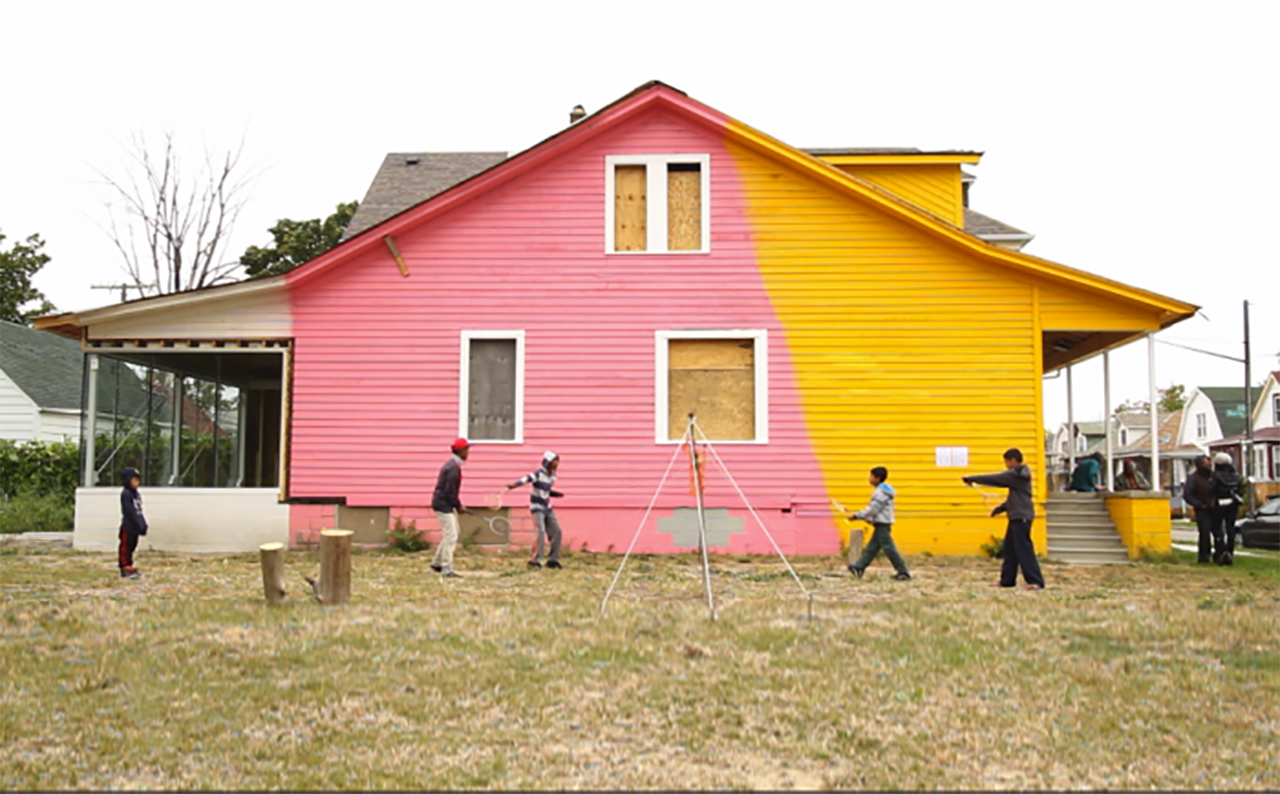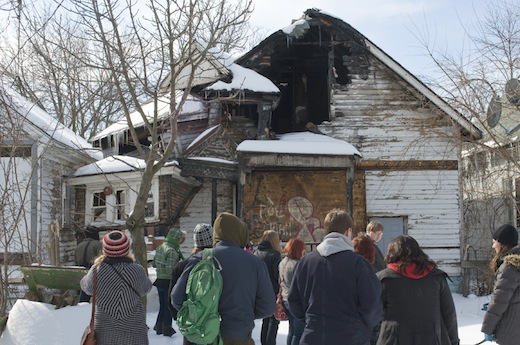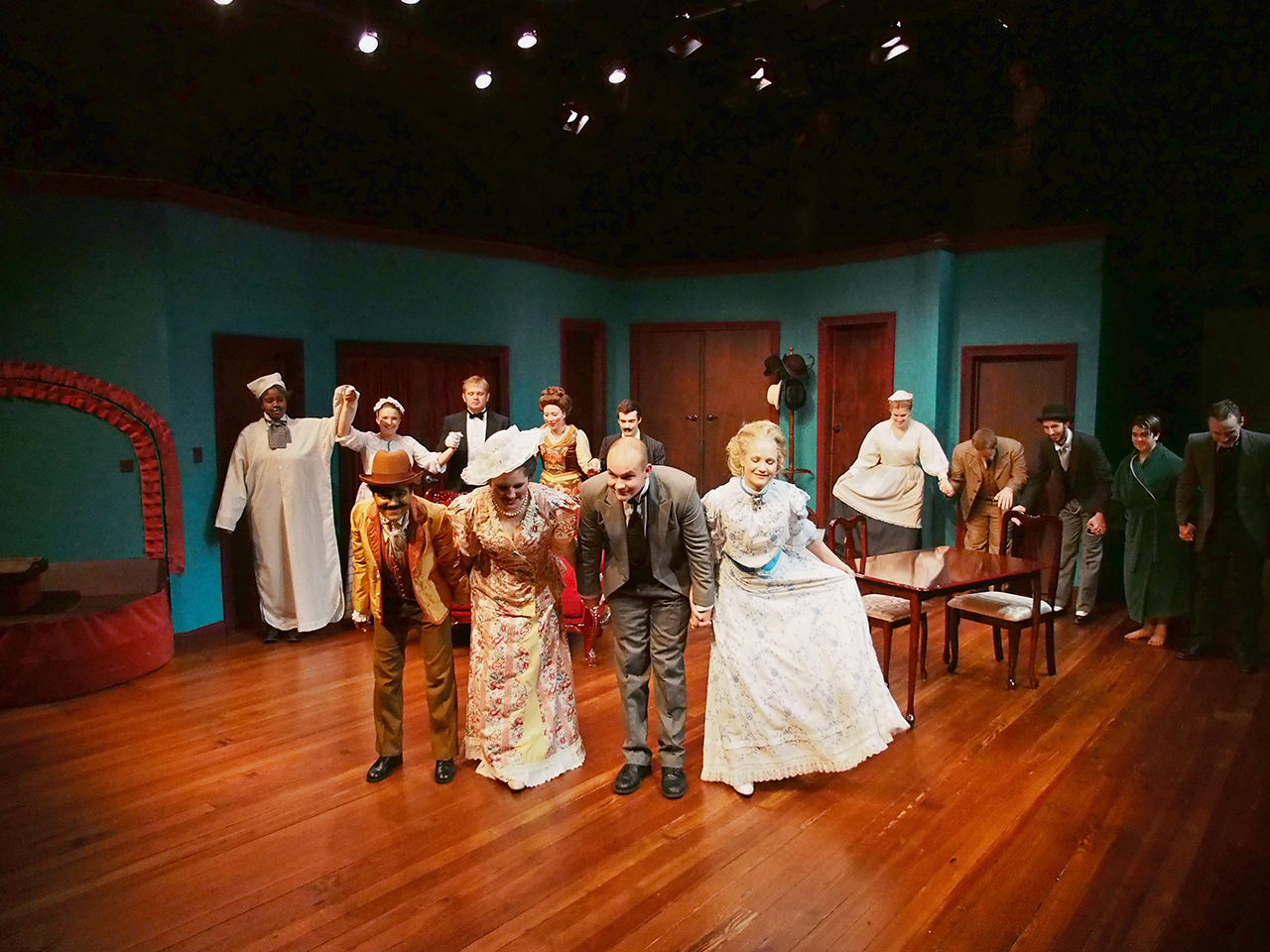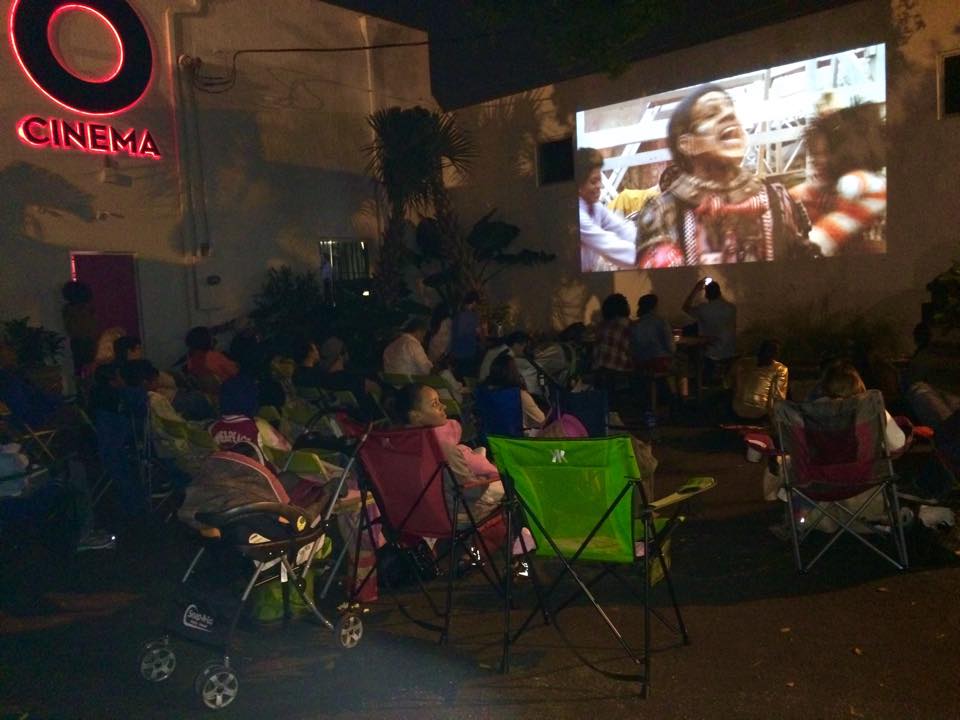
Putting the arts at the center of community development
Above: Power House Productions has made artist interventions in abandoned buildings in Detroit to re-energize a decaying neighborhood; the Squash House is being transformed into a sports center and greenhouse. Credit: Power House Productions.
Knight Foundation today announced it is investing an additional $4 million in ArtPlace America, a national creative placemaking effort. Below, writer Anne Tschida explores the group’s impact.
Typical conversations on economic development tend to focus on new highways, corporate campuses and other large-scale infrastructure projects.
When it comes to building vibrant cities, ArtPlace America asks a different question: What would happen if arts and culture were included at the core of the decision-making? What if artists were at the table?
A unique collaboration of financial institutions, federal agencies and funders, the organization invests in projects that use the arts to seed a community’s transformation. Individual projects must spell out how the arts will invigorate a particular location, and lead to more vibrant communities. The impact is tangible in cities across the country – in Detroit, where artists have turned blighted homes into community spaces, in Miami where a movie house has become an outdoor, gathering spot, and in many others.

A second home, damaged by fire, will be renovated by Powerhouse Productions. Credit: Power House Productions.
“Artists are the one asset that exist in every community,” said Jamie Bennett, executive director of ArtPlace America. “And they play an invaluable role in helping to build healthy, vibrant, and successful cities all across this country. We are thrilled to partner with Knight in weaving arts and culture into the fabric of our everyday lives.”
Knight Foundation has been a major funder of ArtPlace since its inception in 2011, and today announced it is increasing that commitment by $4 million for a total of $14 million.
The creative placemaking emphasis, involving the arts and artists in redevelopment initiatives that target particular locations, has been key to Knight’s backing from the beginning, said Victoria Rogers, vice president for arts at Knight Foundation.
“ArtPlace has animated public and private spaces, rejuvenated buildings and streetscapes, improved business life and brought people together to celebrate and co-create,” said Victoria Rogers, vice president for arts at Knight Foundation. “With each project, ArtPlace doesn’t look to impose solutions. It invests in artists, working with local community leaders and residents, who have the ability to address problems from unique perspectives which results in creative solutions.”
So far, ArtPlace has funded more than 227 projects in 152 locations, including many of the 26 communities where Knight Foundation invests.
A sampling of some of these projects underscores how diverse and creative these location-specific interventions are.
In Philadelphia, FringeArts had been a nomadic presenter of the arts for almost 20 years, until it proposed taking over an historic building along the underdeveloped Delaware River and turning it in to an arts center and congregating spot. The idea was to position the center as an anchor that connects two inner city neighborhoods along the waterfront.
“It was such an under-used part of the waterfront, with such enormous potential,” said FringeArts President and Producing Artistic Director Nick Stuccio.
The group won a $400,000 grant in 2013, and its idea turned out to be a successful and exciting move, Stuccio said. The center, a former pumping station right next to the Benjamin Franklin Bridge, now is home to a 240-seat theater, an indoor restaurant along with the beer garden and year-round programming.
To entice people, the center presents a wide range of programming, from dance, theater and music to film and architectural exhibits. And signs of life are indeed popping up around them, from renovation of piers and parks to a Delaware River boardwalk. “There is development going on all around, and we want to part of the cultural expansion.”

Theatre production in Macon, Ga.
Further south, in the smaller city of Macon, Ga., a similar transformation is taking place, one that is reflective of the city’s own roots. With a $425,000 grant, Mercer University recently finished renovations on an historic yet vacant Presbyterian church to turn it into the Tattnall Square Center for the Arts. Like its much bigger metropolitan counterparts, Macon had also suffered from decline, and the Tattnall Square project mission is to jump-start a renewal on a stretch of the old downtown adjacent to the university, into what they call a “micro community.”
While Tattnall now is home to Mercer’s theater company, and has a contemporary stage, studios and room for film screenings and lectures, its location near college housing and across the street from a magnet elementary school makes its educational reach optimal. Through the building’s large windows, the public can peer into rehearsal rooms, or see costumes being created.
“The center can expose children who go to [the elementary school] Tindall Heights to dance, maybe something that was not accessible to them before,” said Scot Mann, director of Mercer Theatre, who emphasized the family-oriented aspects of the programming. And the center will now have year-round programming, which will keep culture as an active part of this sector of the city. “We want to say, ‘hey, it’s here,’ make full use of it all year,” with summer festivals and other activities.

Film buffs enjoy a movie alfresco at O Cinema in the Wynwood neighborhood of Miami.
In Miami, the founders of O Cinema – which started off as a movie house dedicated to indie films in an emerging urban neighborhood – wanted to broaden the cinema’s scope. A 2013, $100,000 grant allowed them to build Cine Al Fresco, an outdoor screening space, which doubles as a garden and public gathering hub, designed by architect and artist Carlos Alves.
“All the Cine Al Frescos are held in our O Cinema’s courtyard/green space, replete with native and Florida-friendly plants,” said co-founder Vivian Marthell of the Wynwood-district cinema. Compared to the more edgy offerings indoors, Al Fresco is aimed at a larger community, and is free.
The rapidly changing inner city district of Wynwood has benefited from an arts revival, filling up with galleries and entertainment venues. But the development of public spaces, inviting to the local residents living in a once predominantly working class neighborhood – as well as to cultural visitors, has been neglected. This outdoor green theater aims to fill that void. “You can expect more beloved, fun family-friendly films with an occasional fine art or experimental art flourish in our space that is intimate, cozy and colorful – just like our neighborhood!” Marthell said.
ArtPlace is again accepting applications through its National Creative Placemaking Fund. Informational webinars will be taking place Feb. 2 – 3. The deadline is Wednesday, March 2, with registration no later than Tuesday, Feb. 16.
If you’re considering applying, here are specifics to consider:
· Focus on a neighborhood or other geographic community;
· Look to work on a community challenge related to agriculture/food; economic development; education/youth; environment/energy; health; housing, immigration; public safety; transportation; or workforce development.
· Submit a way that artists, arts organizations, and/or arts activities can help address that challenge
Recent Content
-
Artsarticle ·
-
Artsarticle ·
-
Artsarticle ·
